1- Using torch.autograd.grad
You can get the different terms of your gradient only by back-propagating multiple times on your network. In order to avoid having to perform multiple inferences on your input, you can use the torch.autograd.grad utility function instead of doing a conventional backward pass backward. This means you won't pollute the gradients coming from the different terms.
Here is a minimal example that shows the basic idea:
>>> x = torch.rand(1, 10, requires_grad=True)
>>> lossA = x.pow(2).sum()
>>> lossB = x.mean()
Then perform one backward pass on each term out of place. You have to retain the graph on all calls but the last:
>>> gradA = torch.autograd.grad(lossA, x, retain_graph=True)
(tensor([[1.5810, 0.6684, 0.1467, 0.6618, 0.5067, 0.2368, 0.0971, 0.4533, 0.3511,
1.9858]]),)
>>> gradB = torch.autograd.grad(lossB, x)
(tensor([[0.1000, 0.1000, 0.1000, 0.1000, 0.1000, 0.1000, 0.1000, 0.1000, 0.1000,
0.1000]]),)
This method has some limitations since you are receiving your parameters' gradient as a tuple which is not that convenient.
2- Caching the results of backward
An alternative solution consists in caching the gradient after each successive backward call:
>>> lossA = x.pow(2).sum()
>>> lossB = x.mean()
>>> lossA.backward(retain_graph=True)
Store the gradient and clear the .grad attributes (don't forget to do so otherwise the gradient of lossA will pollute gradB. You will have to adapt this to the general case when handling multiple tensor parameters:
>>> x.gradA = x.grad
>>> x.grad = None
Backward pass on the next loss term:
>>> lossB.backward()
>>> x.gradB = x.grad
Then you can interact with each gradient term locally (i.e. on each parameter separately):
>>> x.gradA, x.gradB
(tensor([[1.5810, 0.6684, 0.1467, 0.6618, 0.5067, 0.2368, 0.0971, 0.4533, 0.3511,
1.9858]]),
tensor([[0.1000, 0.1000, 0.1000, 0.1000, 0.1000, 0.1000, 0.1000, 0.1000, 0.1000,
0.1000]]))
The latter method seems more practical.
This essentially comes down to torch.autograd.grad vs torch.autograd.backward, i.e. out-of-place vs in-place... and will ultimately depends on your needs. You can read more about these two functions here.
 .
In order to update the weights alpha and beta, i need to compute three values :
.
In order to update the weights alpha and beta, i need to compute three values :  which are the the means of the gradients of the loss terms w.r.t to all the weights in the network.
which are the the means of the gradients of the loss terms w.r.t to all the weights in the network.